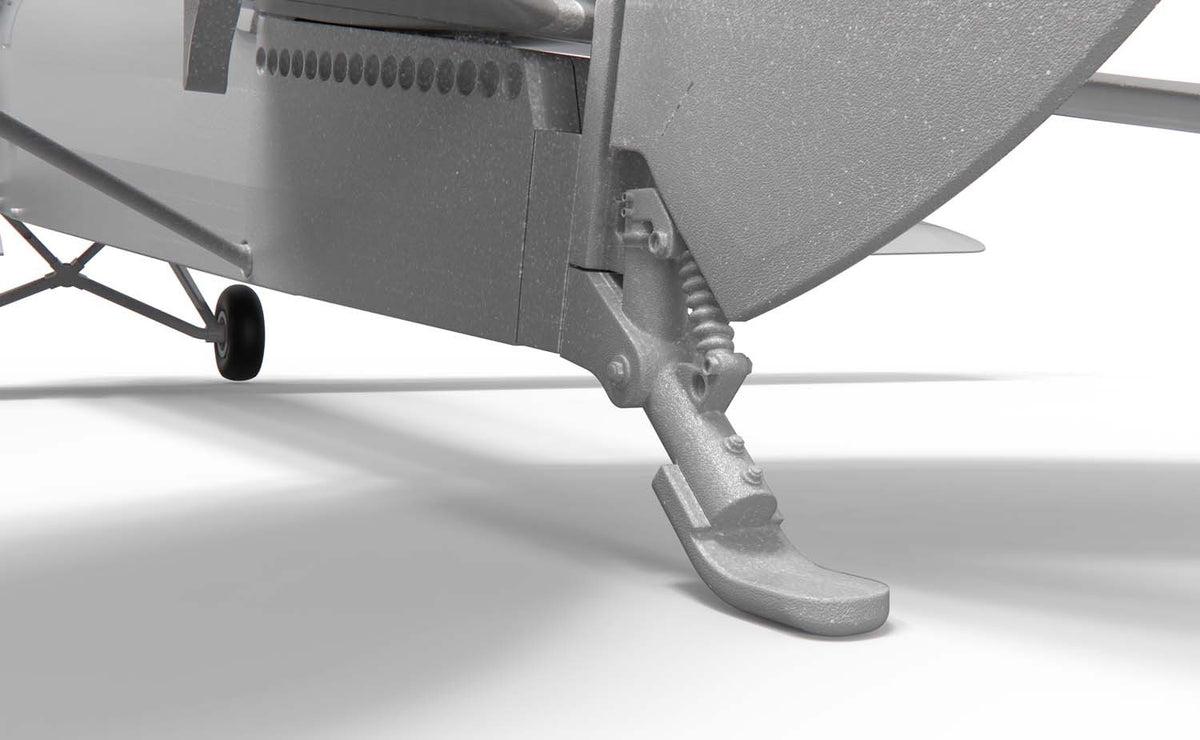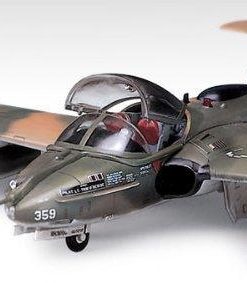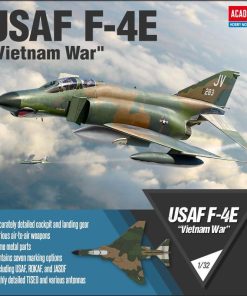Airfix Aircraft 1/48 DH82a Tiger Moth Aircraft Kit Estimated Shipping: 2-3 Business Days
$ 21,59 $ 12,95
From the perspective of the student pilot, the Tiger Moth was a relatively stable and forgiving aircraft to fly, with few handling vices and generally supportive of the odd silly mistake. It has been described as an ‘easy airplane to fly but a difficult one to fly well’, which seemed to have made this the ideal aircraft to serve as a primary/basic trainer for large numbers of future pilots destined for the war effort. As Britain prepared for invasion during the early summer of 1940, there were plans for the gentle-natured Tiger Moth to show a much more aggressive side and support the Spitfire and Hurricane pilots they had previously trained. ‘Operation Banquet’ called for the use of every available aircraft in the defense of Britain’s coastline, attacking any potential invasion force by all means at their disposal. This would see even the most unlikely of aircraft equipped with bomb racks and given a new offensive capability. Should a German invasion have been attempted, there would have been the very real possibility of swarms of bomb-laden Tiger Moths raining fury on the enemy troops below, as Britain used every means in her power to ensure the failure of such a cross channel incursion. Thankfully, due in no small part to the qualities of this effective pilot maker and the resolve of the Royal Air Force, German invasion plans were indefinitely postponed following the Luftwaffe’s inability to score a decisive victory during the Battle of Britain.
With many Tiger Moths remaining in airworthy condition, it is interesting to consider that this famous basic training aircraft is still doing the same job today as it did during its service introduction in the 1930s. The magnificent Tiger Moth allows potential Warbird pilots the opportunity to gain valuable experience flying a ‘taildragger’ aircraft, before eventually moving on to display the Spitfires and Mustangs which thrill the crowds at Airshows all over the world.
Professionally packed and fast shipping
Because of our long-standing partnership with UPS, FedEx, DHL and many other top global carriers we can provide an array of shipping options. Our warehouse staff are highly skilled and will pack your products according to our exact and precise specifications. Your products will go through an extensive inspection and will be properly secured before they are shipped. We ship to thousands clients every day in a variety of countries. Our determination to be the biggest online retailer around the globe is evident by this. Warehouses and distribution centers are located throughout Europe and the USA.
Orders with more than one item are given processing time in accordance with the item.
Before shipping, we will examine the items ordered thoroughly before sending the items. Today, the majority of orders will be delivered within 48 hours. The expected delivery time will be between 3 and 7 days.
Returns
Due to the multiple parties involved which include the factory as well as the warehouse, we are unable to completely manage our stock. So the actual stock may change at any time. Be aware that it's possible for your order to become unavailable even after you have placed the order.
Our policy is valid for 30 days. However, if thirty days have passed after you bought your product, we are unable to provide a refund or exchange.
Your item should be in the original packaging and in good condition. It must also not be used. It should also be in the original packaging.
Related products
MODEL AIRCRAFT
Academy Aircraft 1/72 EA-18G VAQ141 “Shadow Hawks” Fighter Kit Estimated Shipping: 3-4 Business Days
MODEL AIRCRAFT
Academy Aircraft 1/48 USAAF B25D Pacific Theatre Bomber Kit Estimated Shipping: 3-4 Business Days
MODEL AIRCRAFT
Academy Aircraft 1/144 B52H 20th BS Buccaneers USAF Subsonic Strategic Bomber Kit OUT OF STOCK
MODEL AIRCRAFT
Academy Aircraft 1/72 A37B Dragonfly Aircraft Kit Estimated Shipping: 3-4 Business Days
MODEL AIRCRAFT
MODEL AIRCRAFT
Academy Aircraft 1/48 F8F1/2 USS Tarawa USN Fighter Kit Estimated Shipping: 3-4 Business Days
MODEL AIRCRAFT
MODEL AIRCRAFT
Academy Aircraft 1/48 P51 USAAF Fighter North Africa Kit Estimated Shipping: 3-4 Business Days
MODEL AIRCRAFT
Academy Aircraft 1/48 F4J Diamondbacks USN Fighter Kit Estimated Shipping: 3-4 Business Days
MODEL AIRCRAFT
MODEL AIRCRAFT
MODEL AIRCRAFT
MODEL AIRCRAFT
MODEL AIRCRAFT
MODEL AIRCRAFT
Academy Aircraft 1/32 F4E USAF Fighter Vietnam War Kit Estimated Shipping: 3-4 Business Days
MODEL AIRCRAFT
Academy Aircraft 1/144 B47 USAF Nuclear Bomber Kit Estimated Shipping: 3-4 Business Days




























































